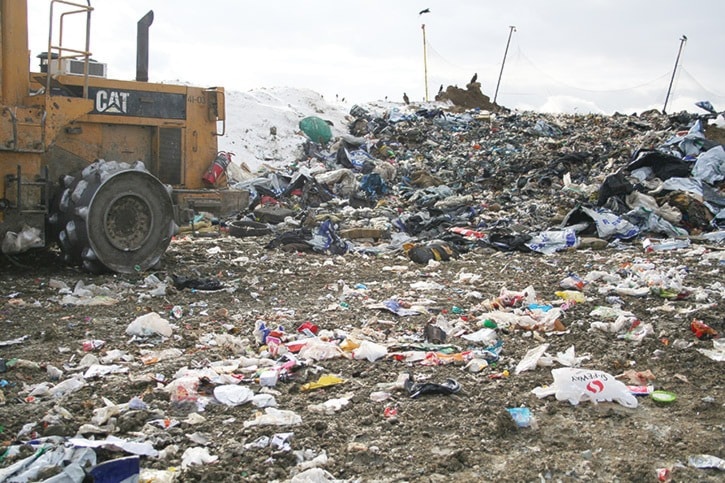When plastic bags end up in a landfill it is problematic for the environment, said Tera Grady, Cariboo Regional District supervisor of solid waste management.
“Some of them become airborne and end up in the bush or the waterways and are hazards to animals and marine life,” Grady told the Tribune. “If people won’t recycle plastic bags and are still disposing of them in the garbage it would be helpful to tie them in a knot, or make sure they are contained.”
Plastic bags are not accepted in the city’s curbside recycling program and must be recycled at one of the CRD depots at Frizzi Road, 150 Mile, Frost Creek or Wildwood transfer stations, or at grocery stores.
“The curbside program can not accept plastic bags because they act like paper in the sorting facility — blasts of air are used to separate the paper — so the bags contaminate the paper recycling stream, they also get wrapped around the conveyor belt system,” Grady said.
Despite plastic bag recycling being available locally, millions are still ending up in the CRD’s landfill at Taseko Gibraltar Mine each year.
“This is the active face of our landfill,” Grady said, pointing to photographs she took at the site last week that showed lots of plastic bags in the mix. “These are the nets that we have up to try and capture all of the wind born scatter. The bags are definitely what get picked up the most frequently.”
Grady said her first choice for containing groceries is to put them in cardboard boxes which are usually available at the stores.
“As long as you recycle the boxes when you get home,” she said. “If you are going to put them in the garbage, don’t take them.”
Save-On-Foods company spokesperson Julie Dickson confirmed the company will begin charging five cents for plastic bags and 10 cents for paper bags on Saturday, March 5.
“We thought it would be a way to significantly reduce the amount of plastic bags that end up in the landfills,” Dickson said. “We have had an active recycling program as well, but we know from industry sources and research when there’s a charge against bags it does drive behaviors toward recyclable bags which we think is probably the better way to go.”
The company is not in favour of municipal plastic bag bans, but wants to take a proactive approach and give consumers a choice, Dickson said.
“I think the public is ready for this,” Dickson added. “Where we have done it as a trial people have typically responded by saying it makes sense and is the right thing to do.”
In some cases people asked why Save-On-Foods has not done it sooner, she noted.
Grady suggested using reusable and repurposed bags, such as the ones made locally out of retired banners by the Cariboo Chilcotin Conservation Society two years ago.
“They are a great option because there was nothing else to do with the banners when they were replaced,” she said.
Reusable bags, depending on what they are made of, have to be used 100 times or more before they break even with overall environmental impacts of using a plastic bag, she added.
“That being said, it is still better to have something that’s not wind born, and if you only have a few well-made reusable grocery bags that you re-use for many years you’ll be doing your part to reduce waste and scatter at our landfill.”
In 2016 8.341 tonnes of plastic bags were recycled at CRD depots in the Williams Lake area at Frizzi Road, 150 Mile, Frost Creek, and Wildwood depots, that equates to approximately 834,100 plastic bags.
“This number is likely 10 to 15 per cent of what our area generates, meaning that up to 7.5 million plastic bags, or 75 tonnes of plastic bags are still being disposed of at our landfill every year.”
In 2016, a total of 897 tons of household packaging was collected at CRD depots in the Williams Lake area, and through curbside pick up in Williams Lake.
Grady said this is about eight per cent of the 11,319 tonnes of household waste produced in 2016 and that the diversion rate could be much higher if more people participated in the recycling program.
“We are on the right track though,” she added. “The weight of recycling diverted from the landfill was up 18 percent from 2015 and packaging is always becoming lighter, which means more items need to be collected to equal the same weight as previous years. Producers of packaging are always striving to “light weight” their packages to become more efficient, for example, the weight of a water bottle in 2017 is much less than in 2010.”
